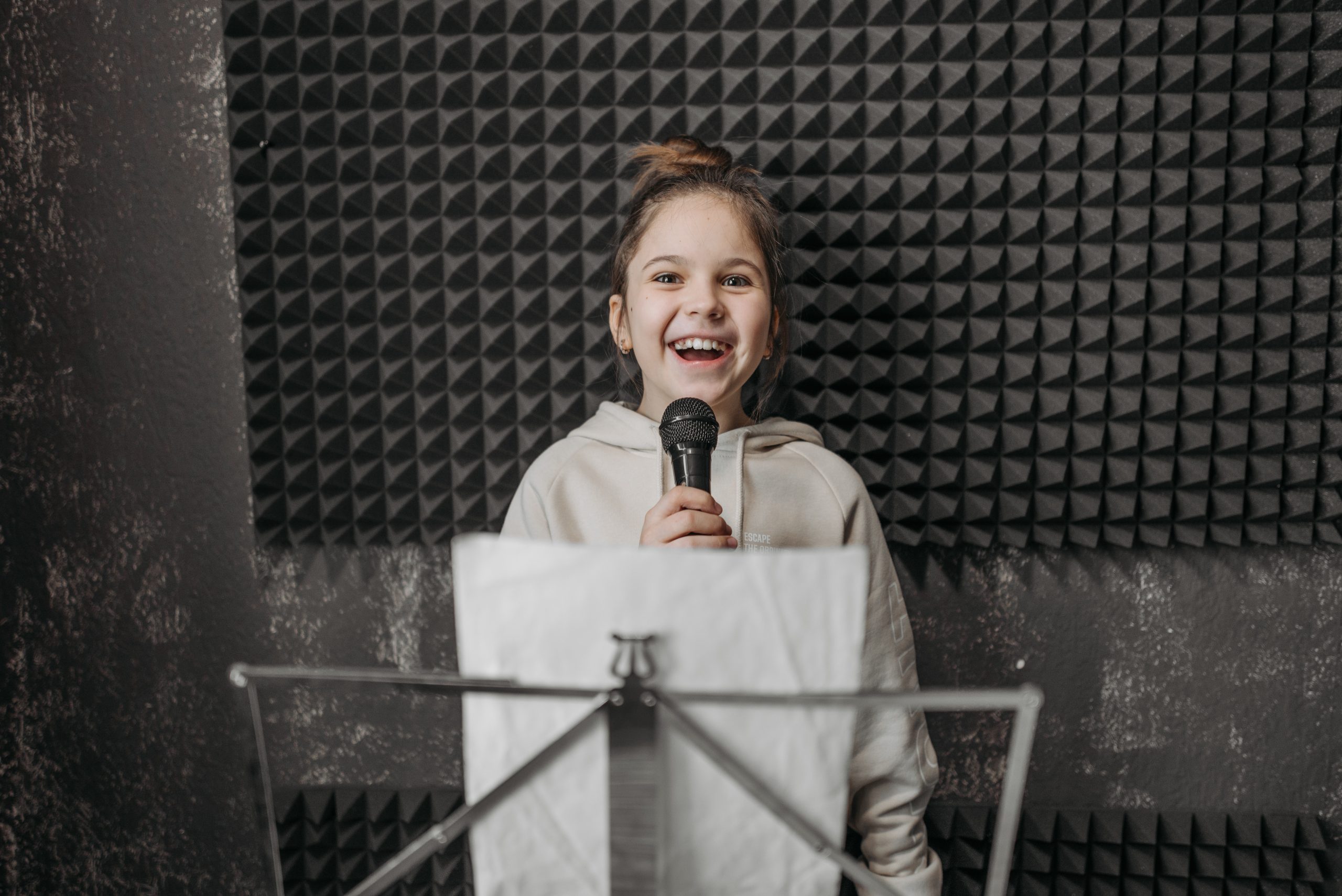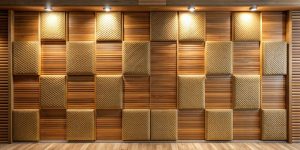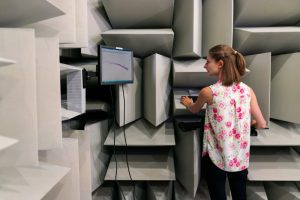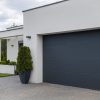How Soundproof Windows and Doors Help Dampen Noise in Studios
Selling albums looked a whole lot different in the twentieth century. You’d have to create a demo, get it to a music producer, and hope they wanted to sign you to a contract and record your music professionally. It was a long shot, and many people’s music never made it beyond the confines of their garages.
These days, creating quality recordings of your music at home has never been more attainable. The necessary equipment is becoming more affordable. The software is easier to use. But, none of that does you much good if the recording location is lacking. Studio soundproofing can be the difference between a pro-level recording and one that sounds like it was created by an amateur.
Studio soundproofing hot spots
No matter what kind of room you’re using for your recording studio, there are certain issues that apply to all of them. Understanding the basics of where you will run into audio issues, as well as how recording studio soundproofing can help, will give you the insight to select the proper products and approach for your soundproofing project.
The walls
Walls make up the majority of the surface area in most rooms. They are also the part that connects one room to the next, structurally speaking. Walls also reflect a lot of sound. If you leave your walls untreated, they can cause echo and reverberation and can cause vibrations to pass into the structure itself, adding even more noise to the room.
Doors and windows
Your room’s entry points can also allow a lot of sound passage if you don’t address them. These entry points are going to be the windows and doors, in most cases. Each of them has its own problems and solutions. You can go all in with noise control doors and windows, or you can attempt to solve the problems yourself, but they need to be addressed one way or another.
Doors
Recording studio doors that aren’t built to reduce sound transmission can allow sound waves to pass through in a number of different ways. If it’s a standard interior door, it’s probably hollow, and this doesn’t do a whole lot to keep sound from passing through. Choosing professional materials in your replacement door can even deliver a soundproof window for recording studios right in the door itself. Also, don’t forget the spaces around the door. They can cause a lot of sound leakage, and will need to be addressed.
Windows
Recording studio windows let light in and make the space feel less like a dungeon, but glass isn’t an ideal surface in a recording studio. It allows some sound to pass through, and reflects the rest. The result is a surface that allows sound passage and can cause problems with both your recordings and your relationships with your neighbors. If you want to keep your windows around, you’ve got to do something about them.
Making the room sound right
Adding things like soundproof doors and windows to your studio will ensure your recordings aren’t plagued by unwanted outside sounds. It will also ensure you aren’t the noisy neighbor that no one likes. Sounds will stay on one side of the wall, whether interior or exterior. What soundproofing won’t do is make the room sound right. For that, you’ve got to acoustically treat the interior.
Sound diffusion
One way we improve sound within rooms is through diffusion. Diffusion is the process of scattering sound waves, so they move around the room in a more natural way, and reduces the instance of audio issues like echo and reverberation.
Sound absorption
The second thing we must do when acoustically treating a room is to absorb some of the sound waves before they are reflected. We can use any soft, absorbent materials to achieve this, but some perform better than others. Using professional products will keep a wide range of audio frequencies from bouncing back into the room, meaning instruments and voices sound natural in the space.
In the same way we use things like acoustic foam and padding to absorb sound waves in the air, we use damping materials to absorb vibrations within the structure itself.
Sound damping
An important part of keeping sound from creeping through structures is damping. When vibrations in the form of sound waves strike an object or surface, those vibrations are transferred into that surface and whatever it’s connected to.
Damping materials absorb those surface vibrations and prevent their transfer onto the next surface. It’s an integral part of studio soundproofing. Soundproof windows and doors are constructed with sound damping materials built in, meaning they do much more for your recordings than any soundproofing hacks or acoustic panels on your door possibly could.
Different spaces require different solutions
Creating a soundproof bedroom studio will look different than soundproofing a garage studio. For one, the construction likely looks different in each location. Also, a bedroom studio is more likely to share walls with people who are sensitive to noise than a garage studio. Your location and budget will dictate what products are needed, and which ones are nice.
Basement studios
A basement can be a great place for your studio since it’s likely to have dense walls to begin with. Exterior basement walls are made of concrete, and surrounded by earth, meaning you don’t have to worry much about sounds passing through them. You’ll focus more on windows and doors here.
If you’re going to have a studio window in the room, and you share the basement with others, they should be the main points of focus when soundproofing the room. Soundproof windows in a basement studio will ensure none of your neighbors lies awake, listening to your recording sessions.
Also, if the room above you gets regular use, you’ll want to pay special attention to the ceiling, so creaks and footfalls don’t make their way into your recordings.
Bedroom studios
Building a studio in a bedroom can be a bit trickier, since it’s more likely to have windows facing streets or playgrounds, or any number of sources of neighborhood noise. They also share walls with other rooms in the home, and possibly even other units or attached houses. This will require a much more aggressive approach.
Creating a soundproof studio booth is a great idea when building in a bedroom, especially if you don’t own your home or apartment. If you can keep the sound from reaching the wall, it will prevent it from migrating outdoors. It will do the same for outside noises. Building a booth within the room will allow you to soundproof your studio without making renovations to a structure you don’t own.
Garage studios
Most garages aren’t built to keep heat from escaping, so they surely won’t prevent much sound passage either. If you aren’t working with a finished garage, you’ve got a lot of work ahead of you. Luckily, you’ve got a blank canvas. You already have access to the insides of the walls, meaning you can install whatever soundproofing materials you want without the hassle of a large demo project. That will come in handy, since your garage will be street adjacent, and may experience a lot of noise caused by cars and trucks in the area.
DIY Tips
If you’re soundproofing your studio on a budget, there are some things you can do yourself to improve your audio quality and reduce the amount of sound that passes through your doors, windows, and walls.
Doors
You can lessen the amount of sound passing through your studio door by replacing your hollow core door with a solid one. The heavier the door, the more it will block sound waves. Adding a simple door sweep and barrier to block any gaps will also help. The degree to which they block sound depends on the quality of the materials, but something is usually better than nothing.
If you prefer a studio door with windows, you’ve got to make sure the windows are addressed as well. A single pane won’t cut it if you want great sound. If you can’t afford a complete upgrade to a soundproof door and window, you can add some thick curtains or window inserts to improve the performance of the window you already have.
Walls
Walls can be the toughest part of home studio soundproofing, since you can’t just take the current one down and replace it the way you can with windows and doors. Making major strides requires a larger remodel, and isn’t always in the budget. But, there are some simple steps you can take to increase the mass and density of your walls yourself, and without breaking the bank.
Green glue
If you want your walls to do a better job of removing vibration energy, pick up some green glue and drywall. Applying a layer of green glue between two surfaces provides separation between the two, meaning the vibrations that impact the outer surface are greatly reduced or eliminated before transferring to the next. That’s because green glue acts as a sound damper. It’s a great solution, and relatively easy to do yourself.
Windows
Since home studio windows can allow a good deal of sound passage, it’s important to address them, even if you aren’t working with a big budget. Hanging some thick curtains or blankets over them will help a bit. The thicker the blanket or curtain, the better they will perform. They won’t match up to acoustic curtains, but they will reduce some reflections and absorb a few of the sounds that sneak in from outside.
Another option for your windows is inserts. Anywhere you have older, single pane windows prone to sound leakage, window inserts are an affordable way to add a second pane with space between it and your existing window.
Consult a professional
While DIY solutions will definitely do more than ignoring your audio profile, if you want professional level recordings, professional materials and expertise are essential. Studio soundproofing can be a tricky business. Make sure you have the help of someone who knows how to install that soundproof double door correctly, as well as whether or not you really even need one.

















Leave a reply
You must be logged in to post a comment.